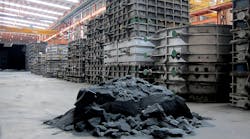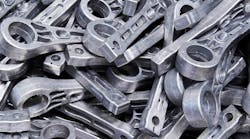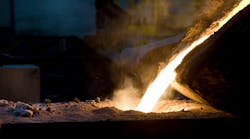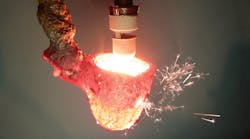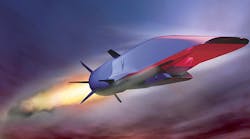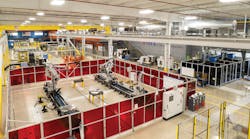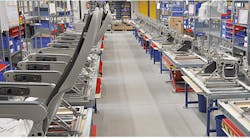Magnesium Elektron, which develops and supplies high-performance magnesium alloys for casting and other process, has achieved a breakthrough in the civilian aerospace market with the selection of its Elektron® 43 alloy by Zim Flugsitz GmbH to produce structural parts for its line of modular aircraft seating. The German manufacturer’s first mag-alloy seats are scheduled to enter service this year in a low-volume non-commercial aircraft program.
Zim Flugsitz designs and manufactures lightweight seats, emphasizing passenger comfort and “living space,” as well as safety, with flexibility for interior aircraft design.
Reportedly, the new seats will achieve a significant weight reduction thanks to the new alloy, compared to seats produced in aluminum alloys, while preserving the strength and ductility needed for these applications.
“There is always a need for weight reduction, and magnesium can be a solution for certain components,” according to Zim Flugsitz v.p. of R&D, Uwe Salzer,
Elektron43 is a magnesium alloy with “excellent mechanical properties,” corrosion resistance, and low flammability, according to the developer. It has AMS 4485, ASTM B107 and MMPDS-08 specifications, and while it is optimized for wrought applications it can be forged under a range of conditions, and tailored to maximize strength, ductility, or reduce residual stresses.
“The use of our Elektron 43 magnesium alloy has enabled Zim Flugsitz to surpass their weight-reduction targets and improve the fuel efficiency and endurance in this new application,” explained Steve Montisci, European technical sales manager.
“They are the first to realize the weight-saving benefits of magnesium for this type of application, and we have enjoyed working with them to achieve this milestone,” he continued.
Magnesium Elektron alloys have been used previously in military aircraft, and in engine components for civil aircraft. During the past decade, the company has been working with regulatory bodies, aircraft OEMs, and seat manufacturers to gain acceptance for magnesium in civil aircraft interior structures. This included changes to SAE standard AS8049 so that magnesium can be approved for use in commercial aircraft with 20 seats or more.
The FAA approved use of magnesium for aircraft seating last June, and FAA, European Aviation Safety Agency, and the aircraft industry continue their work to finalize the framework for commercial aircraft applications.
“Although it is still a little early to expect a breakthrough into high-volume applications, this project is an important step and will demonstrate the benefits that Elektron magnesium alloys can bring to future ‘light-weighting’ strategies for commercial aircraft designers and operators,” Steve Montisci noted.


